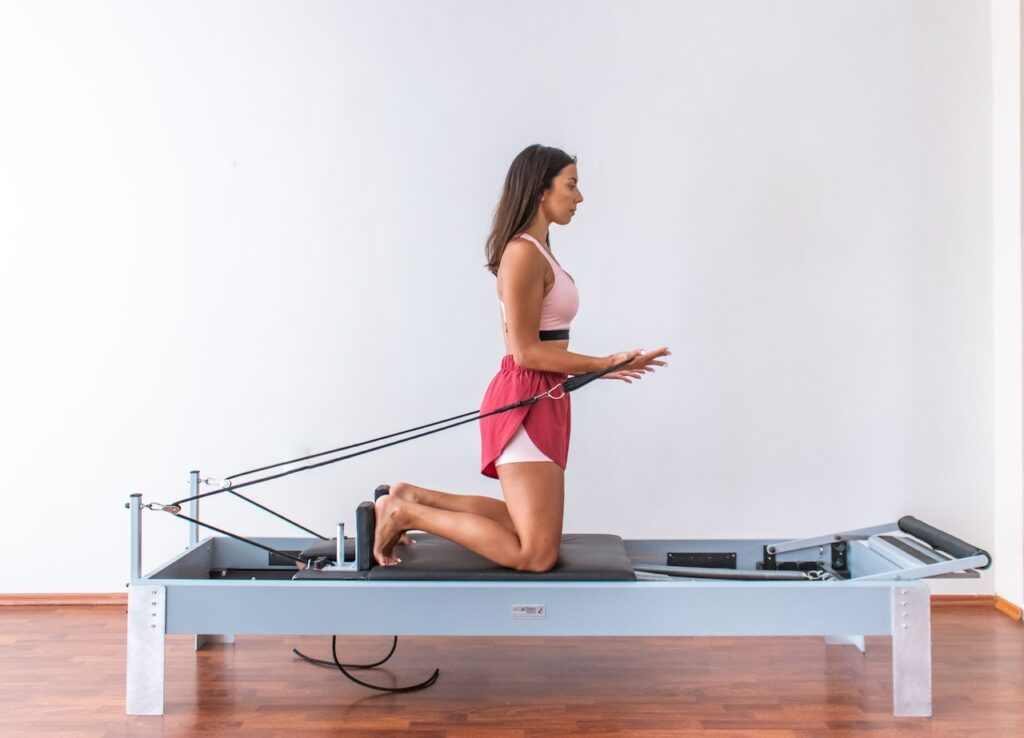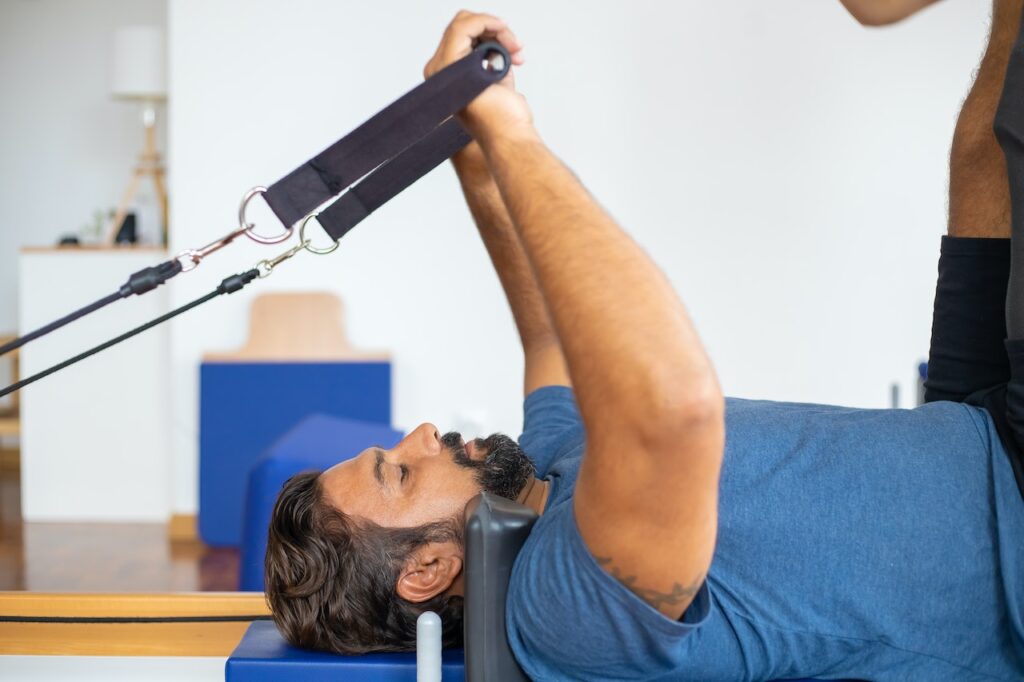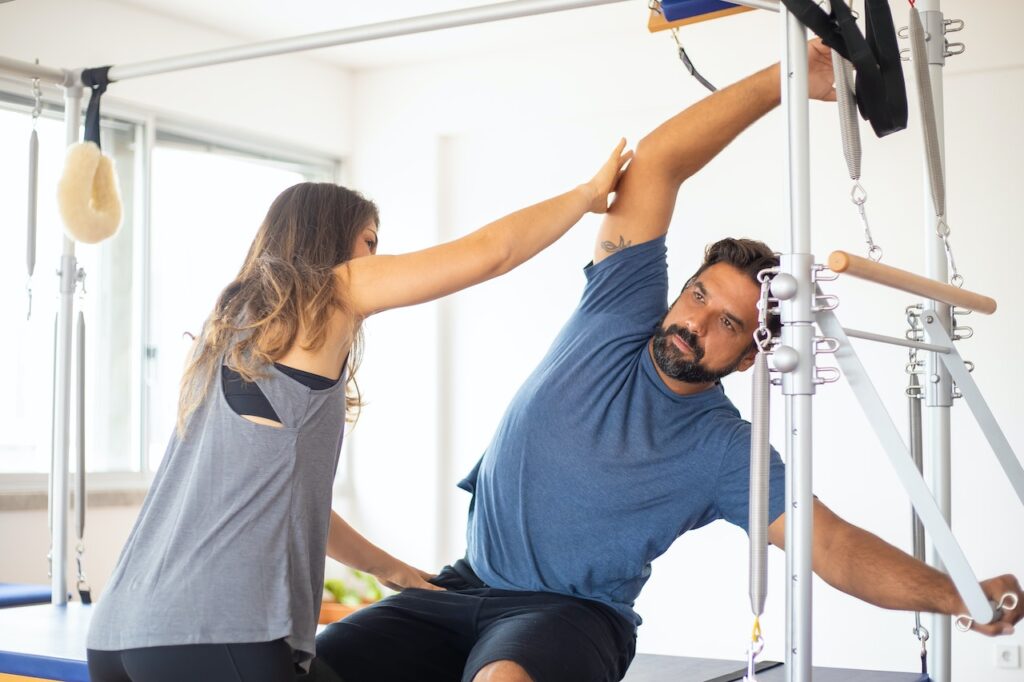Reformer Pilates is not just a fitness fad; it is actually an old form of exercise that has been around for many decades now. It provides many benefits including increased flexibility and strength. But how often should you do Reformer Pilates?
Reformer Pilates, just like any other type of exercise, should be done according to your fitness level and goal. However, most people who do reformer Pilates regularly find that two to three times a week is the ideal frequency. This helps you achieve results without getting fatigued.
Keep reading if you want to know how often you should do reformer Pilates and learn about some reformer Pilates you can do at home.

Best Reformer Pilates Workout Schedule
Your intention or purpose for doing reformer Pilates is your guide on deciding how frequently you will do this workout.
If your goal is to enhance flexibility, you may want to begin by taking a Pilates class, two to three times a week. On the other hand, if you want to build strength and tone your muscles, three to four times a week is a good start.
This frequency may seem too many, especially for beginners, but don’t forget that every session takes only thirty minutes to one hour. So squeezing a reformer Pilates in your busy schedule is not hard to do.
Just remember that the more frequently you work out, the quicker you will see results. However, doing reformer Pilates even just three times a week will show a significant improvement in your flexibility, strength, and overall health and fitness.
Commitment and consistency are critical factors for you to see noticeable results from doing reformer Pilates. Hence, be sure to stick with your schedule to reap the benefits.
Reformer Pilates Exercises To Do at Home
Here are some of the basic reformer Pilates exercises you can do at home.
1. Footwork
The reformer Pilates footwork is a squat-like movement that is performed lying down on a reformer machine instead of standing up.
This workout is done with your head on the headrest, your back flat on the carriage, and both feet on the foot bar. The movement in footwork is performed by pressing away from the foot bar and stretching the legs completely.
Bending the legs and moving your body in a squat-like position is the next phase. This moves you back to your starting position.
There are different foot variations that you can perform including Pilates V, pads of your feet, arches, heels, and feet wide. Performing these various foot positions changes the priority or the target of the foot workout.
Footwork variations can also vary according to the spring tension. The combination and number of springs attached to the carriage will dictate the weight on which the person on the reformer will work. This adds resistance and also changes the goal of the workout that is being performed.
2. Chest
Reformer Pilates can also target your chest. Hold the machine’s pulley then push your body up and down on the gliding board. This workout uses your body weight as resistance and targets your triceps and pectoralis minor muscles. Each chest-centred Pilates workout is low-impact, however, you can increase its difficulty by adding more reps and sets.

3. Long Stretch
The long stretch focuses on the abdominals. Its main objective is to strengthen the abs and challenge your stability while on a sliding carriage.
The reformer setup should begin with 2 medium springs depending on the resistance that you want. Both the foot bar and the headrest must be up.
Start by placing your hands on the foot bar, shoulder-width apart. The carriage should be against the stopper. Place the balls of your feet between the shoulder rests. Make sure that your body forms a straight line from head to heels.
Take a deep breath as you press the carriage down and make sure that the only movement occurs in the shoulder joint while your body maintains a straight line position. Then, exhale to move the carriage back into the stopper as your body moves back to the starting position. Repeat the movement 3 to 5 times more.
4. Leg Circles
Leg circles on the reformer machine target the abs, thighs, glutes, pelvis, hamstrings and quads. To perform this exercise, attach two springs to the platform according to the resistance you need. Bend your knees and point your feet while lying down on the platform. Carefully secure your feet into the loops.
Begin by extending your legs at a 45-degree angle. Then move your legs in tiny outward circles. Ensure that you are doing the leg circles evenly while your pelvis keeps still. Circle the other leg after completing five repetitions. Perform two sets of ten circles each way.
5. Side Overs
Side overs are a great workout for building head-to-toe stability, balance and strength while horizontally flexing the spine against gravity.
A side-over setup would mean that all the springs are fastened on the reformer bed and the sitting box is in the short box position, then the foot near the strap is hooked under the fluffy strap while sitting sideways on the top of the box. Now start your side overs and make sure that your pelvis remains square during the movements.
Begin by sitting tall on the box to stretch the spine while your arms point up over the ears. Inhale to prepare and when you exhale bend your torso away from the flexed foot. Breathe in again to move back to the starting position ensuring that your hips remain still and square.

Final Thoughts
The frequency you need to do reformer Pilates greatly depends on your goal and fitness level. However, many people see results just by doing reformer Pilates two to three times per week. Whatever your workout schedule is, the effectiveness of this exercise will depend on your commitment and consistency to your fitness plan.
Related Questions
1. Is it okay to do Pilates every day?
It is okay to do Pilates every day as long as you ensure that you keep the exercises varied and balanced. Doing Pilates every day, or just about any type of exercise, may lead to overtraining which is not good for your body. Your body needs to take rest periods for it to recover better and build stronger muscles.
Also, remember that Pilates is all about keeping your mind and body connected. Exhausting your body by training every day defeats the essence of a true Pilates experience.
2. What results can you expect from reformer Pilates?
Some of the results you can expect from taking a reformer Pilates class include enhanced strength and flexibility, improved posture and body alignment, and positive impacts on mental health.
3. How much time should be spent on Reformer Pilates?
The ideal time to spend on reformer Pilates is around thirty to sixty minutes per session, depending on your workout intensity level. There is also no problem if you do shorter periods each session since you will still see noticeable results as long as you are consistent with your workout schedule.
- How Long Should You Stay in a Sauna Safely? - 20 January 2024
- Boost Post-Workout Recovery: Benefits of Using a Sauna for Recovery - 19 January 2024
- Discover the Health Benefits of a Low EMF Infrared Sauna - 19 January 2024
